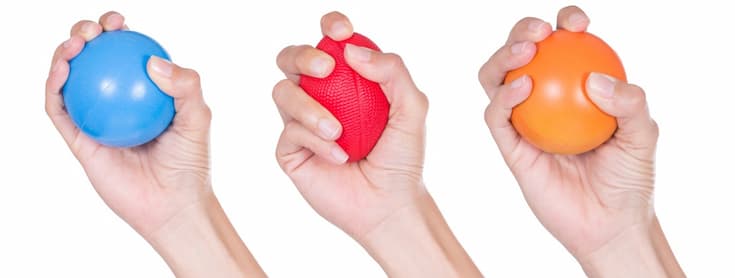
15 October, 2024
Stress Shapes in Education: Aiding Concentration and Calming Nerves
In the dynamic and often high-pressure environment of education, finding effective tools to aid concentration and calm nerves is vital. One such tool, surprisingly simple yet increasingly popular, is the use of custom stress shapes. These small, squeezable objects are making a significant impact in educational settings.
The Rising Stress Levels in Educational Environments
The issue of rising stress levels in Australian educational environments is a significant concern, affecting a large number of students across various age groups. The impact of this stress on mental health, academic performance, and overall well-being cannot be understated.
A substantial proportion of students experience high levels of stress and anxiety related to their academic pursuits. Research conducted by ReachOut in 2021, involving over 1000 young people aged 14-25, highlighted that study stress has been taking a considerable toll on students' mental health, affecting their sleep, nutrition, and relationships. The study noted a worrying trend of decreased access to support for study stress, with a drop from 85% in 2019 to 78% in 2021??.
Furthermore, headspace's research revealed alarming statistics indicating the extent of mental health issues among students. Their findings showed that 83.2% of students felt stressed, 82.1% reported a lack of energy or motivation, and 79.0% experienced feelings of anxiety. More concerning was the fact that 35.4% of students had thoughts of self-harm or suicide??.
The Sydney Morning Herald reported that nearly half (47%) of Australian students feel very tense when studying, a figure higher than the international average. This high-stress level is not only detrimental to their mental health but also impacts their academic performance. Stress and anxiety can lead to decreased motivation, impaired concentration, and an increased risk of academic dropout. The long-term consequences of early school leaving can be significant, both for the individual and society at large, including lower earnings and reduced participation in the community.?

Stress Shapes: A Simple Solution
Enter stress shapes. How can they help you ask? There are many ways they can assist in reducing stress levels for students. Below are some examples.
1. Enhancing Concentration
The act of squeezing a stress ball provides a physical and sensory experience that can help ground a person’s attention. This is particularly helpful for students who might struggle with sensory processing disorders or attention-deficit/hyperactivity disorder (ADHD). The sensory input from squeezing the ball can help these students filter out distractions and focus more effectively on their work.
The repetitive squeezing and releasing can create a sense of rhythm. This rhythm can be soothing and help some students establish a routine, which can lead to improved focus on the task at hand. Similar to how some people tap their feet or click pens to help concentrate, the rhythmic motion of using a stress ball can serve a similar purpose.
2. Calming Nerves
The action of squeezing a stress ball engages the muscles in the hand and arm. When released, this action can create a sense of muscle relaxation, mirroring the release of tension throughout the body. This physical release of tension can signal the brain to relax, helping to calm nerves.
Some individuals use them in rhythm with their breathing. Squeezing while inhaling and releasing while exhaling can create a pattern that helps in calming the nervous system.
Focusing on the action of squeezing and releasing can provide a distraction from stressful thoughts or external stressors, such as an upcoming exam or presentation. This distraction can help reduce feelings of anxiety.
It also engages the sense of touch, which can be grounding. This sensory engagement can help divert attention away from stress-inducing thoughts or environments. Also, similar to mindfulness techniques, focusing on the simple action of squeezing and releasing can bring the individual's attention to the present moment, reducing anxious thoughts about past or future events.
Psychological Comfort:
It allows for the channeling of nervous energy or fidgeting into a specific, non-disruptive action, which can be especially helpful for individuals with anxiety disorders or attention difficulties.

3. Sensory Stimulation
They can be particularly beneficial for students with sensory processing issues, like those with Attention Deficit Hyperactivity Disorder (ADHD) or Autism Spectrum Disorder (ASD).
Students with ADHD or autism often have difficulties with sensory integration. Stress shapes provide a tactile sensory input, which can be soothing and help in regulating their sensory system. The act of squeezing and manipulating one can offer the necessary stimulation to help them process sensory information more effectively.
For students with ADHD, the sensory input from a stress shape can help in maintaining focus on a task. The physical activity of squeezing it can help direct their excess energy in a positive way, making it easier for them to concentrate on classroom activities or homework. They can be particularly effective in reducing anxiety and stress, which are common in students with ASD and ADHD. The tactile stimulation can help in diverting their mind from stressors, providing a calming effect that can make educational settings less overwhelming.
Regular use of them can also aid in the development of fine motor skills. For students with ASD or ADHD, this can translate to improved handwriting and better coordination in tasks that require fine motor precision. They can also act as a self-regulation tool for students who struggle with emotional regulation due to sensory processing issues. By providing a physical outlet for their sensory needs, these students can better manage their emotional responses and behaviours in the classroom.
The transitions between activities can be challenging. A stress shape can serve as a constant and comforting item that they can carry with them, helping to ease transitions and provide a sense of security. Unlike some other forms of sensory stimulation, which might be disruptive in a classroom setting, these are quiet and unobtrusive. They allow students to manage their sensory needs without distracting others.
4. Physical Health Benefits
Regular use of stress balls not only offers mental health benefits but also contributes to various physical health advantages, especially related to hand and finger strength.
Squeezing one requires the use of muscles in the hands and fingers. Regular use can lead to strengthening these muscles. This can be particularly beneficial for improving grip strength, which is essential for tasks ranging from writing to carrying objects.
Improved strength in the hands and fingers can lead to better dexterity. Fine motor skills, which involve the coordination of small muscles in movements—especially those involving the synchronisation of hands and fingers with the eyes—are crucial for activities such as writing, typing, and crafts. It can also enhance hand-eye coordination, improving the ability to perform tasks that require precise movements.
The physical activity of squeezing and releasing one promotes blood circulation in the hands and fingers. This is especially beneficial for students who may have reduced circulation due to conditions like diabetes or for those who spend long periods typing or doing sedentary activities.
Implementing Stress Shapes in Education
There are several ways to introduce them into your education program.
In the Classroom
Teachers can use them as tools to help students maintain focus during lessons. For instance, students who might otherwise be distracted or restless can channel their energy into squeezing the stress shape, which can help them concentrate better on the lesson.
Incorporating them in active learning activities, like group discussions or problem-solving sessions, can keep students engaged and attentive. For students who have a tendency to fidget, they offer a discreet way to channel their energy. This can reduce classroom disruptions and help maintain a more conducive learning environment.
Teachers can also use them for students to manage stress or anxiety, which can improve overall classroom behaviour and participation.
During Examinations and Tests
During exams, they can provide a silent way for students to manage their anxiety. They can help to alleviate nervous tension, which can be particularly high during tests. By allowing students to release physical stress in a quiet, non-disruptive way, stress shapes can help them to focus better on the exam questions.
Inclusive Education
In classrooms with students who have special educational needs, they can provide necessary sensory input. This can help these students stay calm and focused, aiding in their learning process. Their use is a simple, inclusive approach that benefits all students, not just those with special needs. It can contribute to creating a learning environment that accommodates diverse learning styles and needs.
For students who might be shy or less likely to participate, having one can provide a sense of comfort and security, encouraging them to engage more in classroom activities.
The Final Squeeze
Incorporating stress shapes into educational settings is a simple, cost-effective, and inclusive strategy to help students manage stress and anxiety. By providing a physical outlet for stress and a tool for concentration, these unassuming objects can make a big difference in the educational experience. As education continues to evolve, embracing such innovative and holistic approaches will be key to nurturing well-rounded, mentally healthy students.
The Stress Balls Only Team




